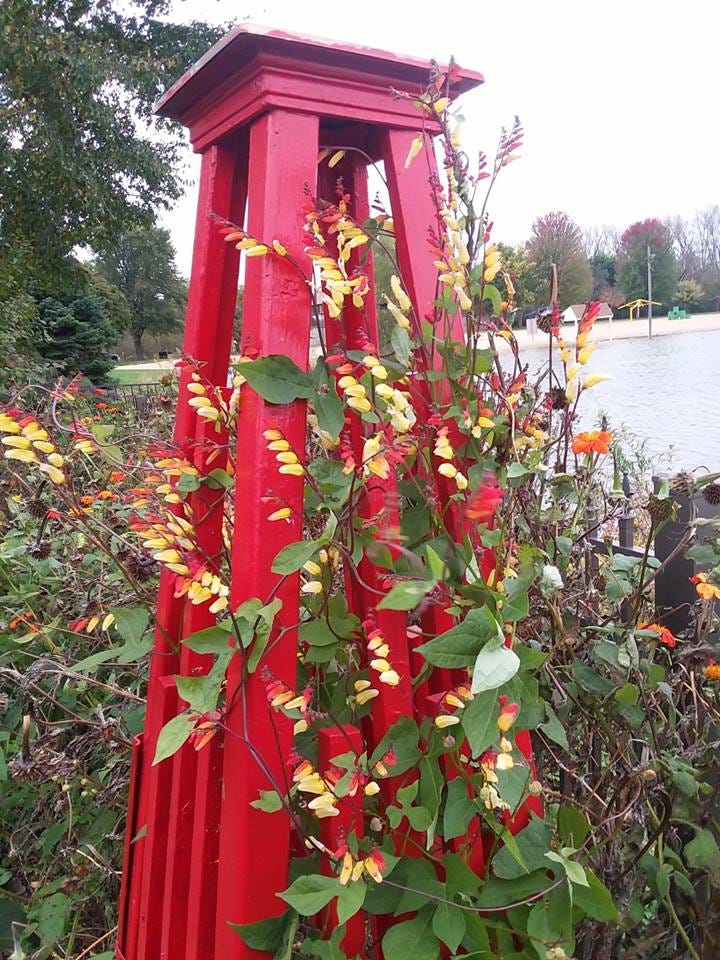
Want to add some excitement in your landscape? Place a tall obelisk, tuteur, or even a tall hefty branch in the garden and train a vining flower on it. One or more freestanding vertical structures festooned with flowers inserts some drama in an outdoor space. These tall garden elements come in many sizes, and you can place them in a planter, a pot or a garden bed. They are invaluable to gardeners with small outdoor spaces.
And so many plants can be trained on them! At the end of this post I have a plant list of the plants illustrated here.
Obelisks and tuteurs can be made from wood or metal. What is the difference between an obelisk and tuteur? Nowadays, the two names are often interchangeable. Tuteurs are four sided, and pyramidal in shape. They have a stable base and taper toward the top. They originated in French traditional gardens. Obelisks are similar except they tend to be straight vertically and have a rounded top with a classic ball-finial at the end. Other shapes, such as an hour glass or a wide flared top, are also available.

You can use these tall structures to screen or hide items too. I placed a 6 ft. tall black powder-coated steel obelisk (resembles wrought iron) in a narrow plant bed outside my dining room window. I then planted Jackman clematis (Clematis jackmanii) at its base. The large purple flowers appear each summer and effectively block the view of the driveway which runs along the side of my house.

Ideas for Using Obelisks in the Garden and More Plants
Keep reading with a 7-day free trial
Subscribe to Gardentopia to keep reading this post and get 7 days of free access to the full post archives.



